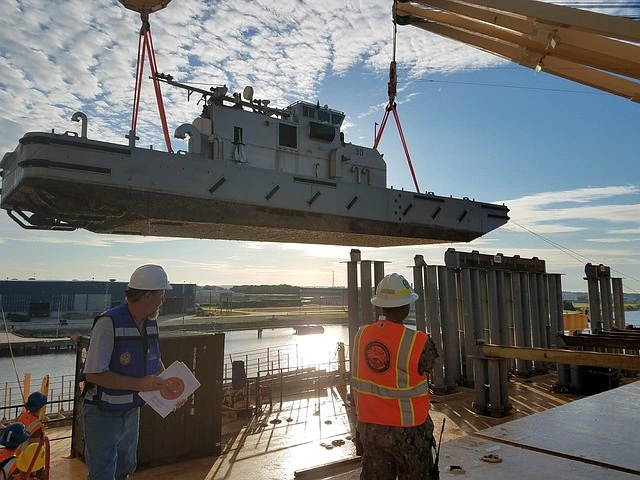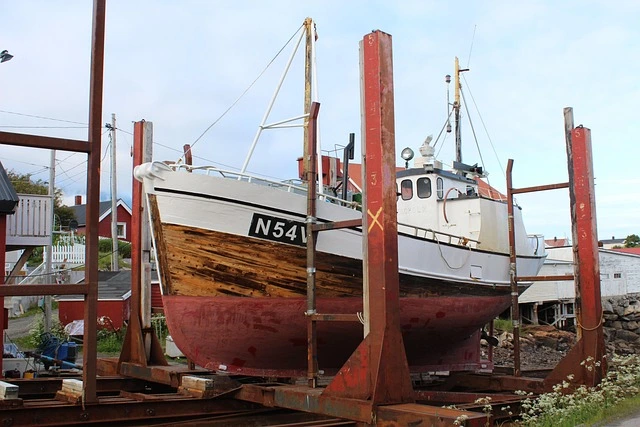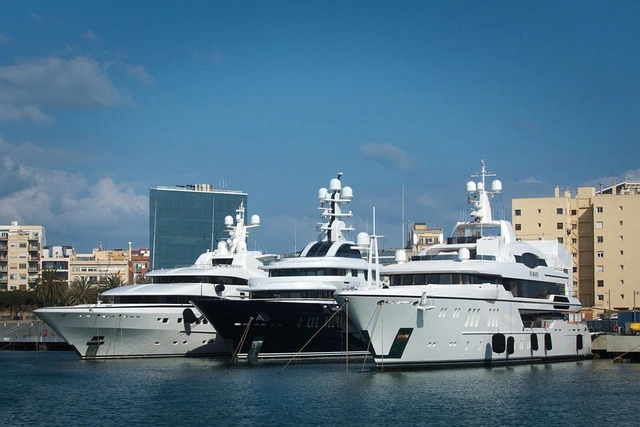Marina managers oversee a variety of revenue sources, including retail stores, service departments, fuel sales, and slip rentals. Financial records become disorganised in the absence of an effective system, leading to mistakes, lost opportunities, and unforeseen losses. Many marinas still rely on spreadsheets and outdated tools that only complicate the process and hinder real‑time financial visibility.
With custom reporting tools, marina managers can accurately track their finances, evaluate departmental performance, and identify growth trends. In fact, a 2024 benchmarking study found that top-performing businesses spend only $0.19 per $1,000 of revenue on financial reporting, which is less than half the cost of average firms, thanks to the use of automated and efficient reporting processes.
With the help of marina management software like DockMaster, marinas can generate customized reports that give a real-time picture of the financial performance of every department within the marina. In this article, we'll look at how custom reporting can improve marina financial management and promote long-term success.

Why Financial Management Is Challenging for Marinas?
Marinas face a unique set of financial management challenges. Managing multiple revenue streams, seasonal shifts, high operational costs, and outdated systems makes it challenging to maintain a smooth financial flow.
Let's break down these core reasons:
1. Multiple revenue streams
Marinas generate income from slip rentals, fuel sales, service departments, retail shops, and sometimes even events or food services. Each of these income streams demands different tracking and management, often requiring separate systems. When handled manually or through disconnected software, it creates confusion and limits visibility.
The complexity grows because revenue is not always consistent. Sales of slip and fuel peak in summer, while service and retail remain more stable. Tracking this variability with basic tools often leads to financial blind spots.
A recent study indicated that most respondents (over 50%) identify primarily as marinas rather than boatyards, and the majority operate facilities with fewer than 500 slips. A full 31% manage marinas with under 100 slips, making manual or fragmented tracking especially risky at smaller scales.
2. Seasonal fluctuations
In colder climates, marinas see sharp declines in business during the off-season, while in warmer climates, demand spikes during specific months. This fluctuation impacts revenue, cash flow, and resource allocation.
Despite high demand, only 30% of marinas reported increased occupancy year-over-year in 2024, while 63% maintained an occupancy rate of over 95%, indicating that seasonal or capacity constraints may limit further growth.
Because these seasonal swings are difficult to forecast accurately, many marinas struggle with cash flow gaps and miss revenue optimization opportunities.
3. High operational costs
Marina operators manage a wide range of operational costs, including staffing, maintenance, fuel systems, and insurance. These expenses continue to rise, putting direct pressure on profitability and long-term planning.

The same study indicated that 88% of marina operators reported higher expenses than in 2023, while only 54% saw profit growth, a 10% decline from the previous year.
Here's a breakdown of these:
-
79% of marinas paid more for insurance because of rising premiums across the industry
-
69% reported higher utility costs in response to broader inflation trends
-
65% reported rising personnel costs, mainly due to labor shortages and rising wages
Without real-time financial tracking and integrated expense monitoring, marinas can overspend in certain areas. At the same time, they can neglect critical investments such as infrastructure upgrades, staff training, or customer service improvements.
4. Manual or disjointed systems
Managers often work across multiple spreadsheets, point-of-sale systems, and repair logs, which can lead to errors, duplicated work, and siloed data. According to the same survey, a large number of marina operators continue to rely on old infrastructure, with some marinas having water and utility systems that date back more than 40 years.
Real-time visibility and the integration of contemporary financial tools are more difficult in this legacy environment. Financial reporting suffers when data is disjointed. This makes it more challenging to understand departmental profitability or to foresee issues before they become serious problems.
The Role of Custom Reporting in Financial Visibility

Custom reporting provides marina operators with detailed insights into financial activity across all departments. Instead of pulling numbers from different systems, managers can view clean, department-level data in one place.
Every decision related to cash flow, investment, or cost reduction depends on having access to accurate, real-time financial reporting.
A. Real-time data across departments
Custom reporting gives marina operators instant access to financial data from every revenue stream, including slip rentals, fuel sales, service, and retail. Instead of waiting for end-of-day or end-of-month summaries, managers can see live updates as transactions happen across the business.
If a customer rents a slip, purchases fuel, and picks up items from the store, all of this activity is recorded in a single, unified view. The data doesn’t sit in separate systems or require manual entry to get processed. This lets managers track performance across all departments in real time and respond to changes without delay.
When numbers update automatically, teams can make more informed decisions throughout the day rather than reacting after the fact. It also reduces reporting errors caused by outdated spreadsheets or missed entries from disconnected tools.
B. Track profit/loss by department, asset, or time
Basic reports often show the overall results, but marinas need to break down performance by department, asset, or date range. Custom reporting allows you to:
-
Compare slip rental revenue with fuel dock profit across any month or season
-
Measure profit margins from service, retail, or events separately
-
Track the performance of key assets, such as forklifts or fuel systems
-
Spot cost spikes in specific periods that affect cash flow
When this level of detail is available, operators can adjust pricing, staffing, or inventory with confidence, rather than relying on estimates. If the fuel dock's labor costs are rising while revenue holds steady, custom reports will catch that early.

C. Create audit-ready reports for compliance or investors
Custom reporting also simplifies the way marinas prepare reports for banks, accountants, or investors. For example, if your accountant needs a monthly breakdown of labor costs by department or an investor requests quarterly EBITDA figures, you can retrieve that information instantly without rebuilding templates each time. This helps avoid back-and-forth emails, missing data, or late reports.
Marinas that handle government grants or financing also benefit. Many programs require regular reporting of financial activity, and having custom reports that match those templates avoids errors and delays in compliance.
D. Customize dashboards for owners, managers, or accountants
Different people at your marina care about different types of financial data. Owners may want to see top-level revenue and profit each month. Managers may want to track performance by shift or staff member. Accountants might focus on depreciation, labor costs, or unpaid invoices.
Custom dashboards allow you to control who sees what, without forcing everyone to look at the same report. This also helps avoid confusion and enables each person to focus on the numbers that matter to them. You can:
-
Set up executive dashboards with gross revenue, profit margin, and occupancy trends
-
Create department dashboards that focus on daily or weekly income and expenses
-
Share financial snapshots with external accountants, investors, or partners who only need read-only access
This way, your team avoids wasting time searching for data in cluttered files or sorting through unnecessary numbers.
E. Forecast revenue based on historical trends and bookings
One of the most valuable features of custom reporting is the ability to project future revenue. For example, if you have three years of booking data for slip rentals, you can forecast occupancy trends by month or by type of slip. If your fuel sales go up during specific holidays or events, you can prepare by adjusting your staffing or fuel delivery in advance.
You can also set up reports that alert you when revenue drops below a certain level or expenses jump past a threshold. These early warnings help you identify and fix problems while there’s still time to make adjustments.
How DockMaster Helps Marinas Streamline Financial Reporting
As a marina reporting software, DockMaster solves reporting challenges by offering built-in tools that centralize financial activity, automate key tasks, and give teams real-time control over their numbers.
Here's how:
1. Pre-built financial report templates
DockMaster includes ready-to-use templates that help marina operators create essential financial reports without manual setup.
You can instantly generate reports such as:
-
Profit and Loss (P&L) statements
-
Aged receivables reports
-
General Ledger (GL) summaries
These reports are pulled directly from DockMaster’s General Ledger module, which consolidates all transactions across departments into a single financial source of truth. Because the system updates in real time, each report reflects your current financial position the moment it’s generated.
2. Custom report builder
DockMaster’s report builder lets you create custom financial views without needing outside help or spreadsheet tools. You can:
-
Choose specific data fields (e.g., department, revenue type, payment method)
-
Apply filters for date ranges, locations, or transaction types
-
Group results by slip category, service type, or any custom label
This allows marina managers to drill into exact cost or revenue areas, helping them make better financial decisions based on current performance data.
3. Automated scheduling
Instead of pulling reports manually every week or month, DockMaster users can set reports to run and send automatically.
Some of the key features include:
-
Configurable scheduling (daily, weekly, or monthly)
-
Direct delivery to designated email inboxes
-
Reliable updates without extra staff effort
This feature keeps everyone informed without delays, especially when department heads, owners, or outside accountants rely on routine financial visibility.
4. Visual dashboards for daily operational insights
If marina managers want to use real-time data to make faster decisions, DockMaster’s dashboards transform raw numbers into visual summaries that update automatically as new transactions are processed.
The dashboards let you:
-
Monitor daily revenue across departments
-
Track cash receipts and outstanding balances
-
Watch expense categories for unusual activity
-
Quickly spot underperforming areas using real-time visuals
This view helps teams react rapidly to changes rather than waiting for end-of-month reports or accountant reviews.
5. Integration with accounting software for seamless workflows
Finance teams no longer need to re-enter transactions into external tools because DockMaster includes integrated accounting features that handle financial data within the same system.
With this custom marina accounting software, marina managers can achieve:
-
Fewer data errors during account reconciliations
-
Faster month-end closings and more accurate financial tracking
-
Simplified compliance during audits or funding reviews
This connection keeps your general ledger accurate without requiring manual imports, exports, or formatting.
Real-World Impact: What Better Reporting Enables
When marinas gain access to accurate and timely financial reporting, the operational impact shows up almost immediately. Better reporting transforms raw data into actionable insights that inform stronger business decisions and build long-term financial stability.
Here’s how it matters:
-
Faster decision-making across pricing, staffing, and inventory: With access to daily financial data by department, managers don’t need to wait for monthly reports to adjust staffing levels, shift inventory, or update pricing based on real-time performance trends.
-
More accurate budgeting and long-range forecasting: Historical data broken down by season, revenue stream, and cost center helps marinas build budgets that match actual demand patterns instead of relying on broad estimates or last year’s totals.
-
Lower revenue leakage from missed charges or outdated pricing: Custom reports can surface gaps in billing, uncollected balances, or underpriced services, helping teams recover lost revenue that typically goes unnoticed in manual or fragmented systems.
-
Stronger confidence from investors, banks, or partners: Audit-ready reports and consistent financial performance tracking make it easier to present reliable numbers to stakeholders, especially when seeking financing, partnerships, or growth opportunities.
Unlock Growth with DockMaster Reporting
Strong financial management begins with clear, consolidated reporting tailored to your marina’s unique operations. Relying on spreadsheets or disconnected systems limits your ability to make quick, informed decisions. Moving to a real-time reporting platform transforms how you track revenue, control expenses, and plan for the future.
As a leading marina management and reporting software, DockMaster serves as the trusted financial backbone for marinas, boatyards, and boat owners committed to growth and operational excellence.
Want to see how your marina can boost profitability using smarter financial reporting? Book a free demo today to learn more!
